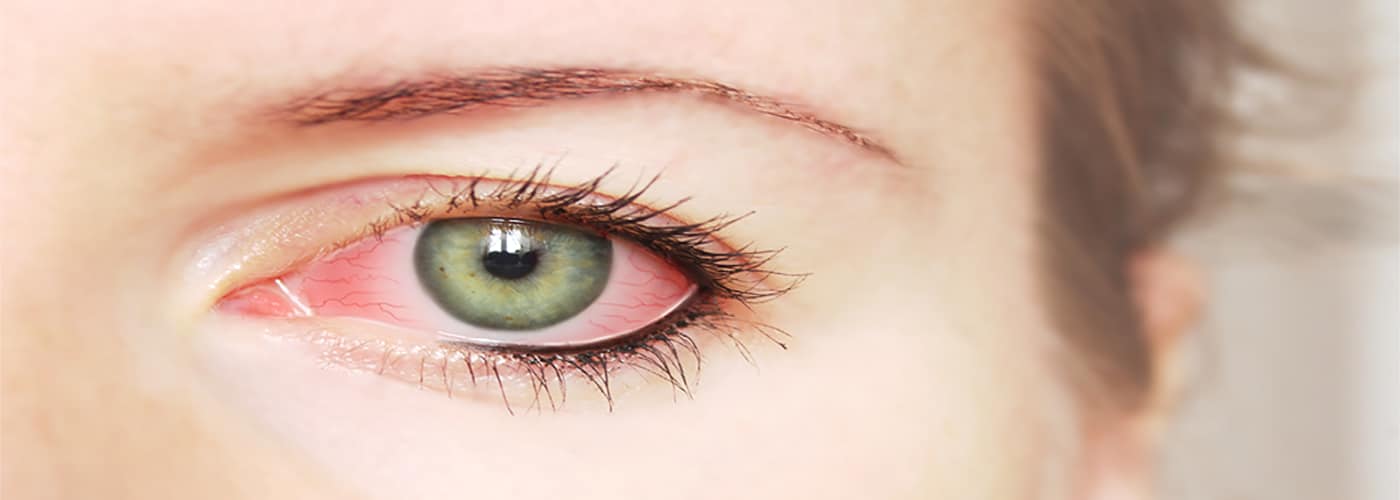Alcohol abuse and addiction take a significant toll on every part of the physical body, from our vital organs to our eyeballs. Because alcohol is a potent chemical, internal changes are inevitably occurring when we ingest it – even when we ingest a “normal” amount. In this article, we focus on the impact alcohol has on our eyes.
Most of us have experienced a hangover at one point, and we are very familiar with the uncomfortable physical symptoms that go hand-in-hand with having a little “too much fun” the night prior. The pounding headache, the upset, queasy stomach, and the dry, bloodshot eyes. Why does alcohol cause bloodshot eyes, and what other impact does booze have on the physical body?
Table of Contents
Alcohol Abuse and Bloodshot Eyes
Alcohol reduces the amount of oxygen that reaches the red blood cells. A lack of oxygen in the blood leads to clumped blood vessels, making the eyes appear red and swollen. Alcohol also makes the eyes bloodshot by dehydrating the individual who has engaged in heavy drinking. Alcohol is a diuretic, meaning that it causes urination – excessive urination can easily lead to dehydration, and dehydration often leads to dry, bloodshot eyes.
If you drink excessively regularly, you might begin to experience chronic bloodshot eyes – and no amount of eye drops will work to alleviate this uncomfortable physical symptom of alcohol abuse. The only proper solution is long-term sobriety.
Other Physical Impacts of Heavy Drinking
There are many other physical symptoms associated with chronic alcohol abuse. Some of the most common include:
- Permanent heart damage
- Different kinds of cancer
- Liver damage
- Pancreatitis
- Chronic fatigue
- Lung infections
- Gastrointestinal issues, like severe stomach cramping or chronic diarrhea
- Compromised coordination
- Malnutrition and weight loss
- Sexual dysfunction in men and women
The good news is, the majority of these physical consequences can be reversed over time with ongoing sobriety and some degree of medical intervention. However, professional clinical care must be sought sooner rather than later. Physical damage related to alcohol abuse can be permanent when left untreated.
Alcohol Withdrawal Symptoms
One of the most severe physical impacts of consistent heavy drinking is the severity of the associated withdrawal period and the life-threatening physical consequences that alcohol withdrawal can cause. Some of the more common symptoms associated with alcohol withdrawal include:
- Severe stomach cramping
- Body tremors
- Uncontrollably shaky hands
- Nausea, vomiting, and diarrhea
- Intense and persistent headache
- Severe anxiety, hyperventilation, and panic attacks
- In extreme cases, delusions and hallucinations
If you have been abusing alcohol for any length of time, medical detox will be necessary. In detox, these symptoms – and any others that might arise – are quickly and effectively treated by a team of experienced medical professionals. Men and women who attempt to detox off alcohol in an at-home setting risk health-related severe complications, sometimes leading to death. Delirium tremens is another severe symptom associated with alcohol withdrawal.
Also known as the DTs, this syndrome occurs within three days of the onset of alcohol withdrawal. It is characterized by extreme confusion and disorientation, auditory and visual hallucinations, severe depression (which can lead to suicidal ideation), and uncontrollable body tremors. These symptoms, however painful, can also be treated in a medical detox setting.
Allure Detox and Alcohol Addiction Recovery
If you or someone you love has been suffering from an alcohol abuse disorder, seeking professional help is always necessary. At Allure Detox, we are dedicated to alleviating all symptoms associated with alcohol withdrawal, allowing clients to enter into the next phase of treatment with a healthy body and a clear mind. If you want to learn more about our comprehensive, medically monitored detox program, reach out today.


